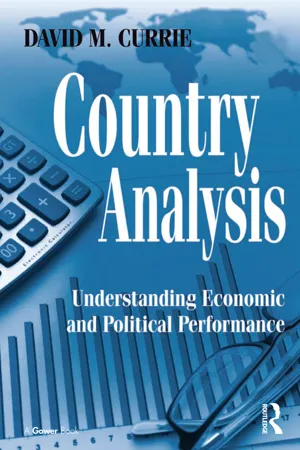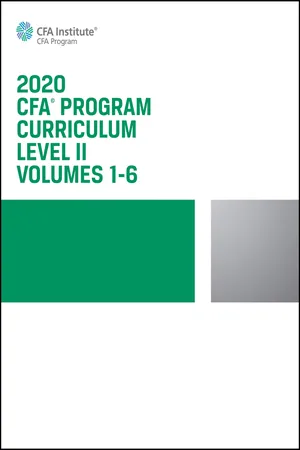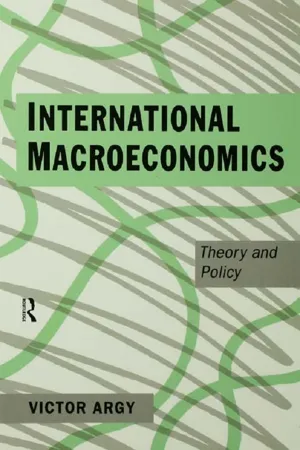Economics
Exchange Rate in the Short Run
The exchange rate in the short run refers to the value of one currency in terms of another over a relatively brief period. It is influenced by factors such as supply and demand for currencies, interest rates, and market speculation. In the short run, exchange rates can be volatile and subject to sudden fluctuations due to changes in economic conditions and investor sentiment.
Written by Perlego with AI-assistance
Related key terms
6 Key excerpts on "Exchange Rate in the Short Run"
- eBook - ePub
- Enrico Colombatto(Author)
- 2016(Publication Date)
- Routledge(Publisher)
9 Exchange ratesDOI: 10.4324/9781315658988-109.1 An introduction to exchange rates
International trade is usually known as the ‘real’ side of international economics. By contrast, the monetary side focuses on exchange rates, i.e. on the rates at which currencies are converted into – and exchanged for – other currencies. The need for conversion originates from the fact that agents frequently operate in different monetary units, but economic decisions require costs and revenues to be comparable, and thus expressed in the same unit. For example, if the parties involved in a transaction agree to use the sellers’ currency, buyers are obviously interested in knowing how much purchasing power they must sacrifice in order to acquire what they are about to buy. On the other hand, if the parties agree on using the buyers’ monetary standard, then sellers want to make sure that the price they get is consistent with their costs and business plans. Similar comments apply when two agents – say, an Indian and a Thai – decide to operate in a third currency (e.g. the US dollar).Of course, exchange rates are not only a convenient way of registering transactions and enhancing accounting practices. Exchange rates are also important because operators must buy and sell foreign currencies in order to pay for foreign goods or to obtain the domestic monetary units with which to buy domestic inputs. The exchange rate, therefore, is also the rate at which individuals buy/sell currencies with a view to expanding the range of their economic transactions.The study of the variables that affect the dynamics of currency markets is the core of exchange-rate economics, which usually follows different lines of reasoning depending on the regime adopted by a country or group of countries. By and large, the nature and degree of government intervention give origin to five different exchange-rate regimes: the gold standard (sections 9.2–9.5), flexible-exchange rates (sections 9.6–9.10), fixed-exchange rates (section 9.11), currency boards (section 9.12) and monetary unions (section 9.13). For each regime, this chapter illustrates the underlying working assumptions, some of the consequences the various regimes generate with regard to the domestic economy, the extent to which government commitments are credible, and the variables that affect adjustment. - eBook - ePub
- W. Charles Sawyer, Richard L. Sprinkle(Authors)
- 2020(Publication Date)
- Routledge(Publisher)
CHAPTER 14Exchange rates and their determinationA basic modelThe exchange rate is determined from day to day by supply and demand of home currency in terms of foreign currency. Each transaction is two-sided, and sales are equal to purchases. Any change in the conditions of demand or of supply reflects itself in a change in the exchange rate, and at the ruling rate the balance of payments balances from day to day, or from moment to moment.Joan RobinsonINTRODUCTIONT he international value of a country’s currency has become an inescapable part of the daily flow of economic information. Most of us are aware that a country’s exchange rate is important, but many of us do not have a clear idea of why the exchange rate matters or what causes it to change. As the chapter’s opening quote indicates, the familiar tools of supply and demand analysis can be used to determine a country’s exchange rate. In this chapter, you will learn why the supply and demand model works in analyzing exchange rates—in the same manner, in fact, that it works in analyzing the price of gasoline or pizza, for one dollar or one yen or one gallon of gasoline is indistinguishable from another. By the end of this chapter you should have a good grasp of why exchange rates are important and what factors cause them to change over the long run. Finally, it is obvious to even a casual observer that exchange rates change frequently. These changes, or volatility, are a source of aggravation for individuals, businesses, and governments. The chapter explains what economists know about the effects of exchange rate volatility on international trade and how changes in exchange rates affect the prices of the goods and services we purchase. The final part of the chapter deals with the underlying value of a currency. While the exchange rate we observe in the market often differs from that value, it is very useful to know what that value is.EXCHANGE RATESSuppose that a U.S. importer is purchasing British Jaguars. To purchase the Jaguars, the importer needs to obtain British pounds by exchanging dollars for pounds. The demand for foreign currency is derived from individuals demanding foreign goods and services. This relationship can be applied in reverse. As individuals in the U.K. demand U.S. products, there is an increased demand for dollars. However, this raises the question of how many dollars must be exchanged to obtain the requisite number of pounds, or vice versa? In this example, the relevant exchange rate is the U.S. dollar–U.K. pound exchange rate. In general, the exchange rate is the price of one country’s currency in terms of another. The demand for British pounds relative to the supply of pounds will determine the exchange rate, just as the demand for gasoline relative to the supply of gasoline determines the price of gasoline. Exchange rates fluctuate considerably over time. However, unlike the price of gasoline, changes in the exchange rate are expressed as changes in the value of the domestic country’s currency. An increase in the value of a currency is referred to as appreciation. Analogously, a decline in the value of the currency is referred to as depreciation - eBook - ePub
Country Analysis
Understanding Economic and Political Performance
- David M. Currie(Author)
- 2016(Publication Date)
- Routledge(Publisher)
explain the factors that influence the value of a currency; 6. explain the difference between fixed and floating exchange rate regimes; 7. explain the risk in a currency transaction caused by appreciation or depreciation of either currency. What is an Exchange Rate? An exchange rate is simply a price that tells you how much a currency is worth in terms of another currency. Because this book is intended for a US audience, most of the discussion will be in terms of how much a US dollar is worth, but the same reasoning applies to any other currency: how much a UK pound is worth in terms of euros, or how much a euro is worth in terms of Japanese yen. Any currency can be stated relative to another currency, and the price is its exchange rate. The exchange rate can be established in two ways: by the government of a country, or by the international currency market. In the old days, before the Second World War, governments set exchange rates that initially were based on the gold content of each country’s coins. When that system ran into complications, rates were set by agreements between governments in what was known as the Bretton Woods system. When the Bretton Woods system failed in the 1970s, most governments left it to markets to determine exchange rates. With a few notable exceptions, today most exchange rates are determined on the currency market. When a government sets an exchange rate and attempts to maintain that value, it is called a fixed exchange rate regime. When governments give up the effort and allow markets to determine exchange rates, it is called a floating exchange rate regime. Between the two extremes are several variations, but those are the choices facing any government: the government can attempt to dictate the exchange rate, or it can leave the decision up to the market - eBook - ePub
Economics for Investment Decision Makers
Micro, Macro, and International Economics
- Christopher D. Piros, Jerald E. Pinto(Authors)
- 2013(Publication Date)
- Wiley(Publisher)
2. FOREIGN EXCHANGE MARKET CONCEPTS
We begin with a brief review of some of the basic conventions of the FX market that were covered in the preceding chapters.An exchange rate is the price of the base currency expressed in terms of the price currency. For example, a USD/EUR rate of 1.3650 means the euro, the base currency, costs 1.3650 U.S. dollars (an appendix defines the three-letter currency codes used in this chapter). The exact notation used to represent exchange rates can vary widely between sources, and occasionally the same exchange rate notation will be used by different sources to mean completely different things. The reader should be aware that the notation used here may not be the same as that encountered elsewhere . To avoid confusion, this chapter will identify exchange rates using the convention of “P/B” referring to the price of the base currency “B” expressed in terms of the price currency “P.”1The spot exchange rate is usually for settlement on the second business day after the trade date, referred to as T + 2 settlement.2 In foreign exchange markets—as in other financial markets—market participants confront a two-sided price in the form of a bid price and an offer price (also called an ask price) quoted by potential counterparties. The bid price is the price, defined in terms of the price currency, at which the counterparty providing a two-sided price quote is willing to buy one unit of the base currency. Similarly, the offer price is the price, in terms of the price currency, at which that counterparty is willing to sell one unit of the base currency. For example, given a price request from a client, a dealer might quote a two-sided price on the spot USD/EUR exchange rate of 1.3648/1.3652. This means that the dealer is willing to pay USD1.3648 to buy one euro and that the dealer will sell one euro for USD1.3652.There are two points to bear in mind about bid/offer quotes:1. The offer price is always higher than the bid price - (Author)
- 2019(Publication Date)
- Wiley(Publisher)
Foreign Exchange Market Concepts We begin with a brief review of some of the basic conventions of the FX market that were covered in the CFA Level I curriculum. In this section, we cover (1) the basics of exchange rate notation and pricing, (2) arbitrage pricing constraints on spot rate foreign exchange quotes, and (3) forward rates and covered interest rate parity. An exchange rate is the price of the base currency expressed in terms of the price currency. For example, a USD/EUR rate of 1.3650 means the euro, the base currency, costs 1.3650 US dollars (an appendix defines the three-letter currency codes used in this reading). The exact notation used to represent exchange rates can vary widely between sources, and occasionally the same exchange rate notation will be used by different sources to mean completely different things. The reader should be aware that the notation used here may not be the same as that encountered elsewhere. To avoid confusion, this reading will identify exchange rates using the convention of “P/B,” referring to the price of the base currency “B” expressed in terms of the price currency “P.” 1 The spot exchange rate is usually used for settlement on the second business day after the trade date, referred to as T + 2 settlement. 2 In foreign exchange markets—as in other financial markets—market participants are presented with a two-sided price in the form of a bid price and an offer price (also called an ask price) quoted by potential counterparties. The bid price is the price, defined in terms of the price currency, at which the counterparty is willing to buy one unit of the base currency- eBook - ePub
International Macroeconomics
Theory and Policy
- Victor Argy(Author)
- 2013(Publication Date)
- Routledge(Publisher)
reinforces exchange rate trends, pulling the exchange rate away from equilibrium over extended periods.Fourth, one of the themes of this book is that the longer-run effects of policy changes (i.e. after wages-prices have fully adjusted and wealth effects are accounted for) are often dramatically different from short-run effects. Often the ultimate direction of change in the real exchange rate is the reverse of that in the short run (see Chapters 20 and 30 ). This again introduces an element of inherent instability in the exchange rate, notably in response to a sustained disturbance.Fifth, wage indexation creates the potential for generating vicious circles of exchange rate depreciation (appreciation) inflation (deflation). Wage indexation was widely used in wage contracts, particularly in Europe, at least to the mid-1980s. If real wages are fixed, changes in real exchange rates may be difficult to realise and so current account imbalances will be difficult to correct (Chapter 8 ).Sixth, when markets are highly integrated financially, as they now are, real exchange rates respond more to real interest rates but less so to cumulative current account imbalances. Thus it now takes substantially longer for real exchange rates to return ultimately to their equilibrium levels (see Blundell-Wignall and Browne 1991).Seventh, we have in the last twenty years lived in a very unstable world. At the time of the switch to flexible exchange rates industrial countries were in the throes of an explosion in money growth; subsequently, we had two major oil price shocks and, in the first half of the 1980s, we had the massive fiscal policy asymmetries, primarily between the USA on the one hand and the other industrial countries on the other. The disequilibria, divergences and uncertainties that these developments created would have played havoc with any conceivable exchange rate regime (Chapter 42
Learn about this page
Index pages curate the most relevant extracts from our library of academic textbooks. They’ve been created using an in-house natural language model (NLM), each adding context and meaning to key research topics.





